Recent Articles
Popular Makes
Body Types
10 Things to Know About Near-Field Communication in Cars
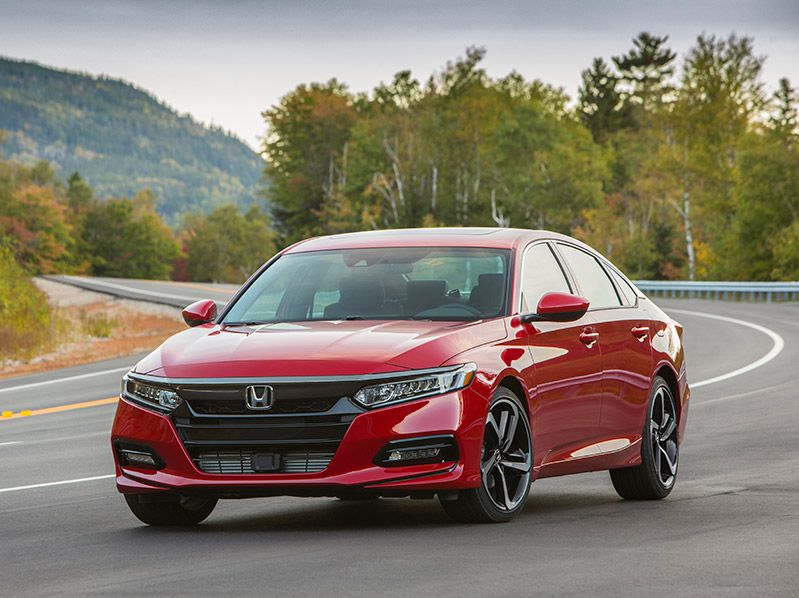
2018 Honda Accord Sport front three quarter ・ Photo by Honda
You might not have heard of near-field communication, but if you have a recent smartphone, you probably have this NFC functionality. The communications protocols under the NFC banner are designed to facilitate device-to-device communication or one-way communication in which an NFC reader gains information from an NFC tag.
Such tags can be affixed to a wide variety of objects. A typical use is electronic payment at retail using an NFC-enabled smartphone. You swipe your smartphone near a point-of-sale reader, and the transaction is completed. In an automotive context, think how valuable a similar arrangement could be for paying tolls or even buying food at a drive-through. One aspect of NFC is especially appealing to carmakers — it works so quickly it seems instantaneous. Let's learn more.
1. NFC lets devices communicate wirelessly.
Near-field communication (NFC) is a form of contactless communication that has similarities to Bluetooth and Wi-Fi, but it is different from those technologies in some important ways. The technology behind NFC allows a device typically known as a reader to create a radio frequency current that communicates with another NFC-compatible device.
An example of this in the automotive context is an NFC device, typically a smartphone, that has the ability to communicate with the vehicle’s system to unlock the doors. Peer-to-peer communication through two active devices is also a possibility with NFC. Contactless communication allows a user to wave the smartphone over an NFC-compatible device to send information without needing to touch the devices together or go through multiple steps setting up a connection.
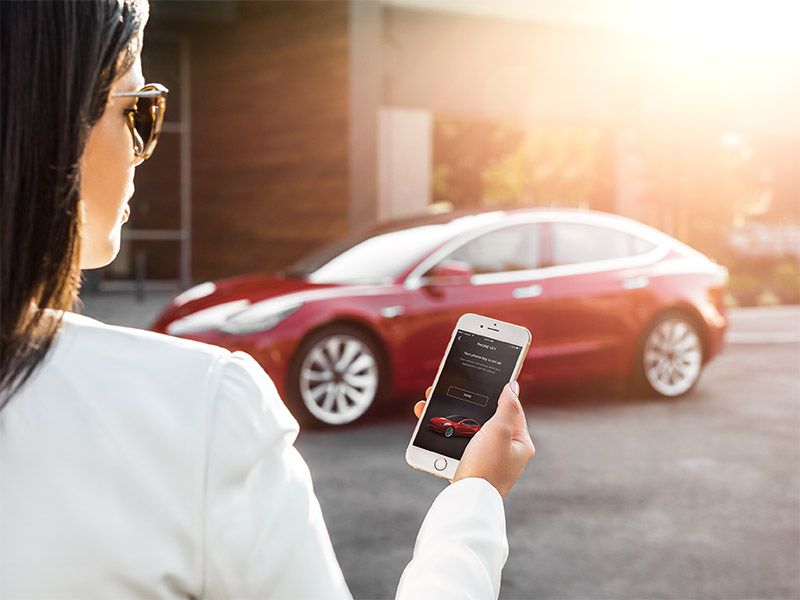
Photo by Tesla
2. NFC can be very secure.
Wireless communications technologies can have security issues. To deal with those issues, near-field communication has the provision to establish secure channels and use encryption when sending sensitive data. Since most of us would like to keep our cars secure, the technology is starting to win adherents among carmakers. Because of this, it's likely that at least some manufacturers will begin to favor NFC for functions like unlocking doors and starting the engine. Some deem NFC more secure than Bluetooth, Wi-Fi, or the cloud.
Frequently, devices communicating via NFC use a one-time encrypted key to ensure legitimacy. Variations of NFC technology are currently being used in banking and in e-passports, both cases in which security is of the highest importance. NFC tech in current and future smartphones makes installing a password on those devices imperative.
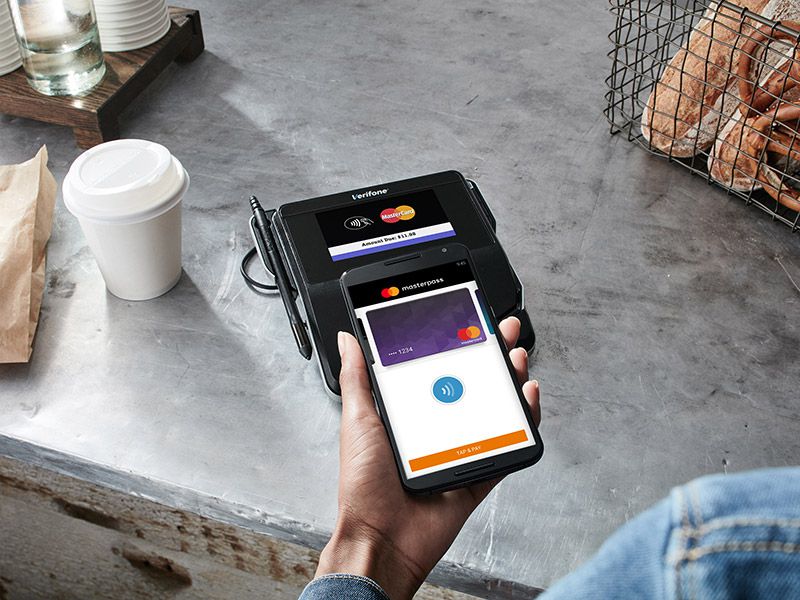
Photo by MasterCard
3. NFC is easy to use.
The typical current use for NFC technology is holding an NFC-equipped smartphone near an NFC reader to pay for a product or service. In an automotive context, think of holding your smartphone near your car’s door handle to unlock it. NFC also enables so-called peer-to-peer communication, allowing you to share a file or a contact by putting two smartphones close to one another. This could let you upload songs, contact lists, and directions by a simple touch (or near-touch) of your smartphone.
In most applications, NFC-enabled devices use a contactless "tap-and-go" function that is intuitive and simple to use. Additionally, NFC communications typically use less power than similar Bluetooth connections. This allows the smartphone to communicate with a vehicle without running down the battery as much.
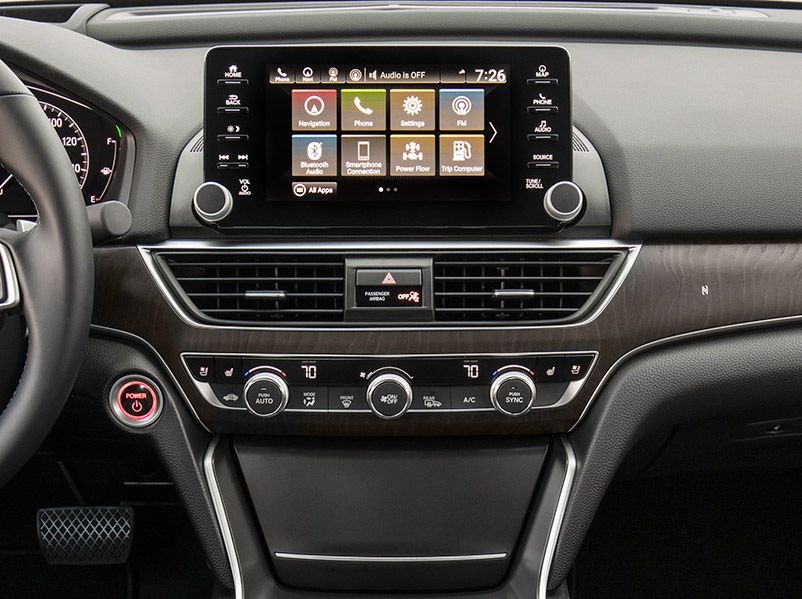
Photo by Honda
4. NFC doesn’t require set-up.
Those of us who are in numerous cars each year well understand the frustration that accompanies attempts to “pair” our phones with individual vehicles. Although the process has improved with time, it can be irritating and time-consuming. Sometimes it becomes necessary to reboot your phone and start again, and it doesn't always work. Wi-Fi has similar set-up issues.
With NFC, no pairing is necessary. NFC-enabled devices are always prepared to communicate with one another, and the communications between them are essentially instantaneous. Because of that, some automakers and smartphone makers use NFC in conjunction with Bluetooth: The initial contact and pairing are accomplished via NFC, and then data — like music, for example — is transferred via Bluetooth.
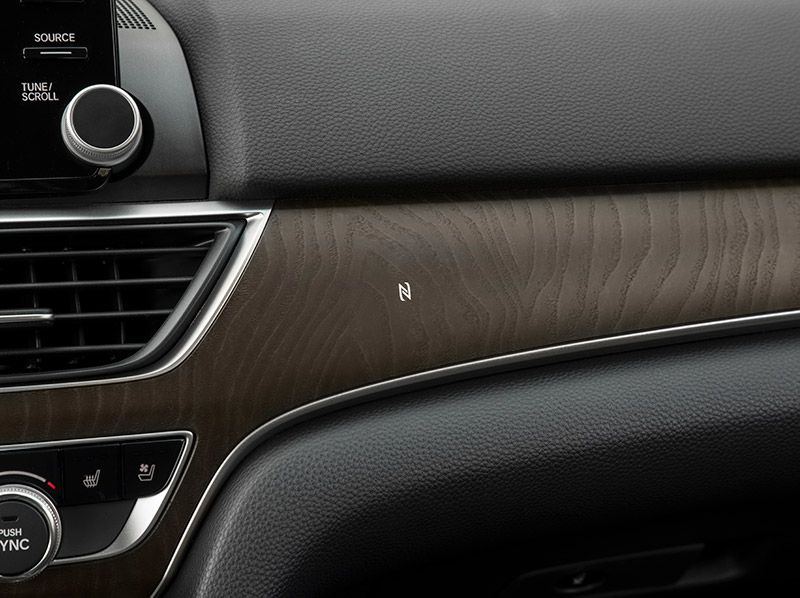
Photo by Honda
5. NFC has limitations.
The most important limitation of NFC is its range. The technology is called "near-field communication" for a reason. Typically, the NFC-enabled device has to be either very close to another NFC device or tag or actually in contact with it.
NFC's maximum range is only about 4 inches. That has security benefits — the signal isn’t flying around everywhere ready to be pirated. But at the same time, it is less convenient for things like door unlocking, since drivers might want to unlock their doors before they are 4 inches from their car. Another limitation is that users must initiate actions from NFC devices. The activation takes a simple tap. But connecting automatically — something we are now used to in Wi-Fi and Bluetooth — is not one of NFC’s capabilities.
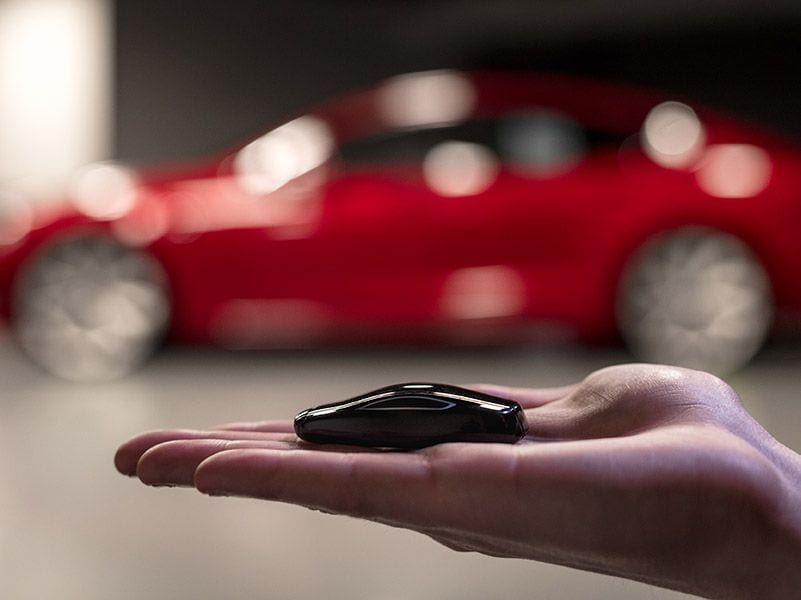
Photo by Tesla
6. NFC signals can be stolen.
As we described earlier, NFC can be very secure. That is one of the reasons it is favored in many countries for in-store transactions and banking. At the same time, it does offer at least one security challenge: If someone can get close enough to you with an NFC reader — and we mean 4-inches-close — they can potentially purloin the contents of your NFC device.
Since the contents are almost always encrypted, what thieves might gain from that is an open question. Why should drivers be worried about security issues with NFC on smartphones? It’s because the most likely auto-related use case for NFC involves smartphones. For example, if your smartphone enables you to unlock your car and start it, you obviously don’t want thieves to have that access.
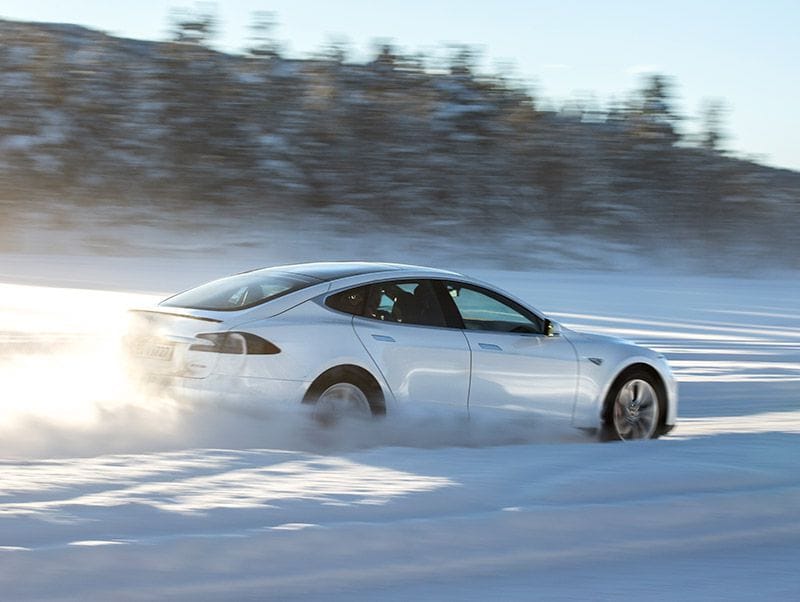
Photo by Tesla
7. The first NFC-enabled automotive functions are simple.
While a handful of cars — mostly European — currently use NFC technology, the applications are very limited. For example, BMW uses NFC to pair cellphones with the infotainment system. After that, Bluetooth takes over. But going forward, the ubiquity of NFC tech on smartphones could mean that we will see more and more NFC-enabled functions.
The first ones will be simple. There could be an NFC touchpoint in the car’s door handle and another in the car’s center console. This will facilitate door unlocking and vehicle start, plus, ironically, Bluetooth and Wi-Fi pairing. (While NFC could potentially enable functions like audio streaming, it is equally likely that car manufacturers will stick with Bluetooth.) Meanwhile, placing the smartphone in an NFC-enabled cradle in the console could activate electronically memorized seat, audio, and climate control settings.
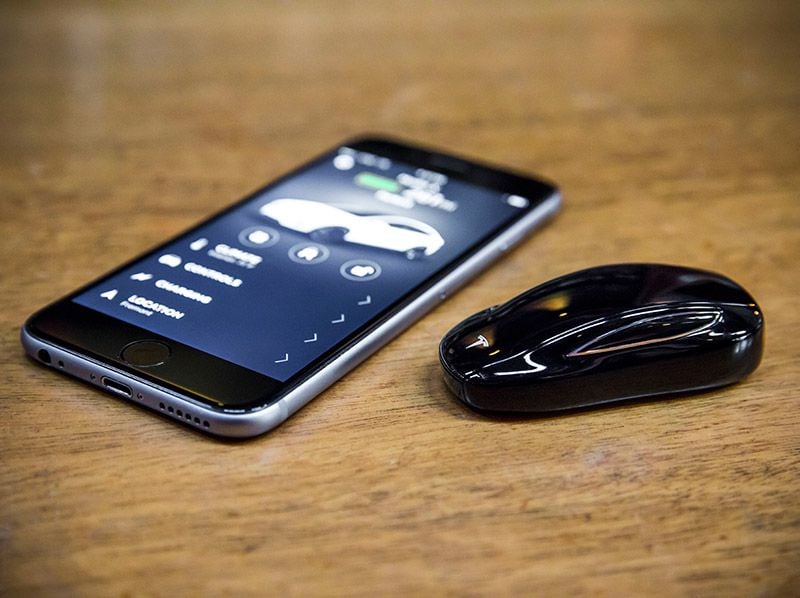
Photo by Tesla
8. NFC could make automobile service easier.
While NFC-enabled functions might start small and not seem very exciting, more elaborate and useful applications of the technology are likely to show up on automobiles soon. Many will involve vehicle service. For example, you pull could into the service lane at your local dealership, and the service writer would pull out an NFC-enabled reader to gather all your vehicle information — VIN, owner name, home address, etc.
But that isn’t all. Then the NFC reader would pull the diagnostic codes from the vehicle, enabling the service writer to pinpoint possible problems. During service, electronic systems can be updated using NFC. When the service has been completed, an NFC reader might be used to be certain that the car leaving the shop has no lingering diagnostic codes. You’ll even be able to pay for the service using NFC.
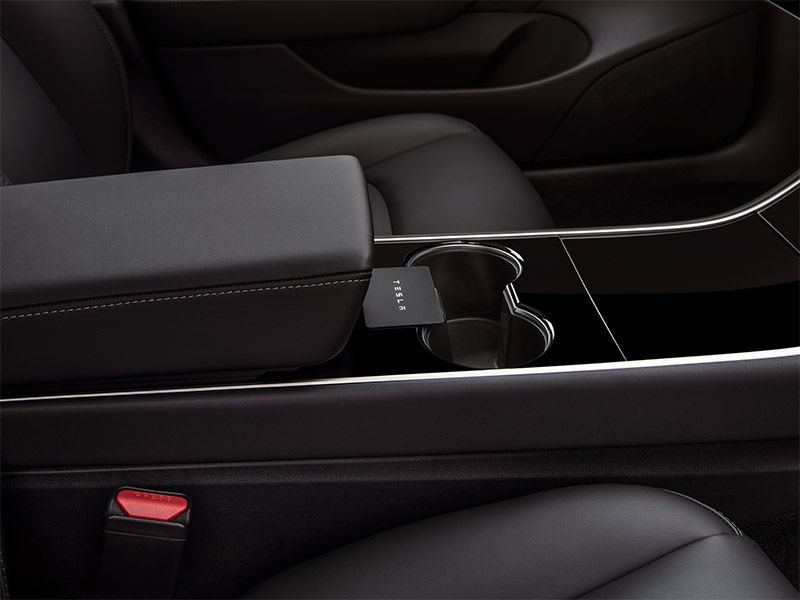
Photo by Tesla
9. NFC will power car-sharing.
Vehicle-sharing is getting a lot of press right now. Whether large numbers of individual drivers will decide to share their cars in Airbnb style is open to question. But there is little doubt that we will see more car-sharing in the future, and because of its flexibility, NFC is tailor-made to enable it.
Using NFC on smartphones, individuals can be given electronic “keys” to vehicles. The car owner/car-sharing service can specify the length of time the key is valid. It can even program the key to set other parameters — for instance, a maximum speed, a mileage limit, or a geographic boundary. Again, payment can be made using the NFC-enabled smartphone in an encrypted transaction. Similarly, NFC plus a proprietary app can help fleets manage access to their vehicles and prevent the serious problem of lost keys.
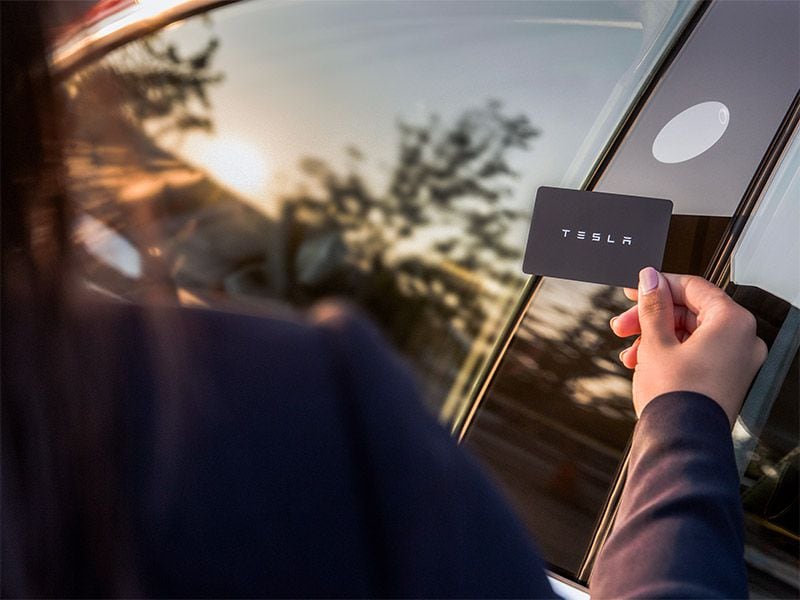
Photo by Tesla
10. NFC will work in conjunction with other technologies.
Few experts suggest that near-field communication will supplant Bluetooth, Wi-Fi, and the cloud. Instead, they see it as a complementary technology that does some things well and others not so well. For example, General Motors and BMW are two companies that use a cloud-based solution to enable remotely authorized door unlocking and engine starting.
But this approach has disadvantages. A cloud solution requires both the car and the phone to be online, and that can’t always be guaranteed. So NFC might be used to supplement or even supplant the cloud for this function. But cloud communication won’t go away, because it is important for emergencies. Bluetooth and Wi-Fi will also likely remain integral to in-vehicle communications in the future. Their abilities to communicate at longer distances than NFC will make them valuable for functions like location services.

Photo by Honda